
漢德百科全書 | 汉德百科全书
 *National minorities in China
*National minorities in China




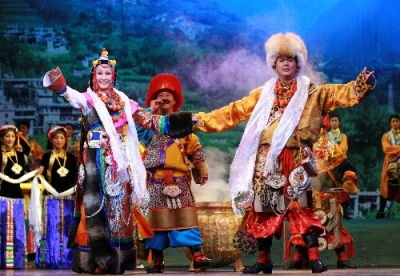
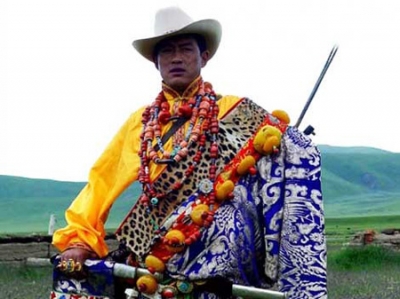
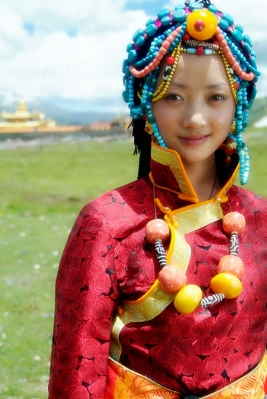
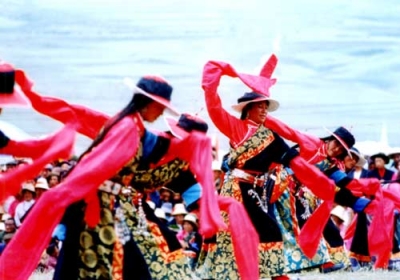
藏族(藏文:བོད་པ་ )是中国的56个民族之一,是青藏高原的原住民。在中国境内主要分布在西藏自治区、青海省和四川省西部,云南迪庆、甘肃甘南等地区,此外印度、不丹、美国、加拿大、欧洲、澳洲等地区也有藏族分布。拉萨是藏族人心中的圣地。目前全世界藏族人口约750万左右,中国境内约700万(2016年),藏裔人口保守估计在1000万以上。
藏族的历史是中国历史不可分割的一个组成部分,是中国及南亚最古老的民族之一。7世纪初期吐蕃建政之后,吐蕃与唐朝的接触日益频繁。10世纪到16世纪,是古代藏族文化兴盛时期。1951年,西藏和平解放。
藏族有自己的语言和文字。藏语属汉藏语系藏缅语族藏语支,分卫藏、康、安多三种方言。
藏族普遍信仰藏传佛教。公元七世纪佛教从天竺传入吐蕃,已有1400多年的历史。藏族人民创造了灿烂的民族文化,在文学、音乐、舞蹈、绘画、雕塑、建筑艺术等方面,留下了极为丰富的文化遗产。藏族雕刻技艺高超。此外藏戏独具特色,藏医药学也是人类重要遗产 [ 。
根据《2021中国统计年鉴》,藏族总人口为7060731人。
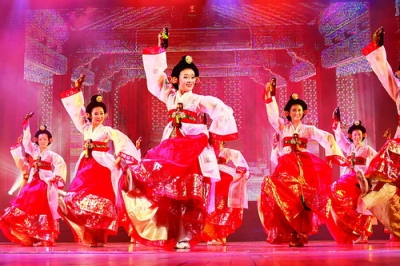
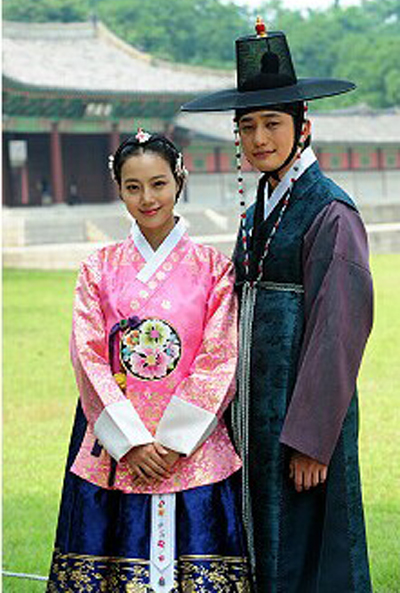
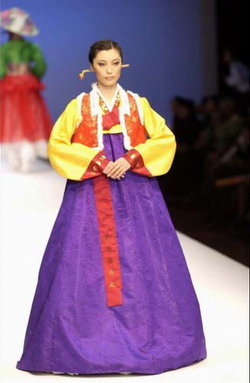

朝鲜族地区是我国北方著名的“水稻之乡”。享有盛名的延边稻米,晶莹剔透,清香扑鼻,清代延边龙井县明岩乡所产稻米就曾被钦定为贡米。延边著名的“苹果梨”,果大、肉多、果心小,汁液丰富,酸甜适度。此外,人参、党参、贝母、山葡萄、松茸、木耳、元蘑等,也是朝鲜族地区的特产。
朝鲜族有本民族的语言和文字。朝鲜语归属尚无有定论,一般认为属阿尔泰语系。我国朝鲜族现在使用的语言文字称为朝鲜语和朝鲜文。以前朝鲜文中曾夹用汉文,现在都用民族文字拼写。



Die Daur (auch: Dauren, Daguren, Daghuren, Dachuren u. a.; Eigenbezeichnung: Daor; chinesisch 達斡爾族 / 达斡尔族, Pinyin Dáwò’ěrzú; bis Anfang der 1950er Jahre zählten Teile von ihnen zu den "Solonen" chinesisch 索倫, Pinyin Suòlún),[1] sind eine der 56 offiziell anerkannten Nationalitäten der Volksrepublik China. Sie sprechen eine Sprache aus der mongolischen Sprachfamilie. Nach der letzten Volkszählung im Jahr 2010 zählen sie 131.992 Menschen. Sie leben in der Inneren Mongolei (Hulun Buir, vor allem Morin Dawa), in Heilongjiang (Qiqihar, vor allem Meilisi, Youyi und Taha), und in Xinjiang (Tacheng).[2]
达斡尔族是中国少数民族之一,主要分布于内蒙古自治区莫力达瓦达斡尔族自治旗、鄂温克族自治旗以及黑龙江省齐齐哈尔市梅里斯达斡尔族区一带;少数居住在新疆塔城。目前约有13.1万人。亦分布于俄罗斯(石勒喀河与伯力一带),俄罗斯称相关地区为达斡里亚(Даурия),即外贝加尔。
ダウール族(達斡爾族)は、モンゴル系の民族。中国領内の内モンゴル自治区北部のフルンボイル市、黒竜江省が元来の居住地であり、また清代の乾隆年間(18世紀後半)には新疆に駐屯兵が派遣され、その末裔数千人が旧駐屯地(現在のタルバガタイ地区)に分布している。人口は約13万2千人。
The Daur people (Khalkha Mongolian: Дагуур/Daguur; simplified Chinese: 达斡尔族; traditional Chinese: 達斡爾族; pinyin: Dáwò'ěr zú; the former name "Dahur" is considered derogatory[citation needed]) are a Mongolic-speaking ethnic group in northeastern China. The Daurian form one of the 56 ethnic groups officially recognised in the People's Republic of China. They numbered 131,992 according to the latest census (2010), and most of them live in Morin Dawa Daur Autonomous Banner in Hulun Buir, Inner Mongolia and Meilisi Daur District in Qiqihar, Heilongjiang of China. There are also some near Tacheng in Xinjiang, where their ancestors were moved during the Qing Dynasty.
Les Daur (chinois simplifié : 达斡尔族 ; chinois traditionnel : 達斡爾族 ; pinyin : ; l'ancien nom "Dahur" est considéré comme péjoratif[réf. nécessaire]) sont un groupe ethnique constituant un des 56 groupes ethniques officiellement identifiés par la République populaire de Chine.
I Daur (o anche Dahur, in Cinese: 达斡尔族, in Pinyin: Dáwò'ěrzú; il nome ufficiale "Dahur" è considerato dispregiativo) sono un gruppo etnico facente parte dei 56 gruppi etnici riconosciuti ufficialmente dalla Repubblica popolare cinese.
Secondo l'ultimo censimento del 2000, essi contano 132,394 individui, molti dei quali vivono sotto la Bandiera Autonoma dei Daur Morin Dawa (Mòlì Dáwǎ Dáwò'ěrzú Zìzhìqí 莫力达瓦达斡尔族自治旗), nella regione autonoma cinese detta "Mongolia Interna" (Nei Menggu). Geneticamente, i Daur sono discendenti dei Kitai, come hanno provato alcune recenti analisi del DNA[1].
Los daur (chino: 达斡尔族; pinyin: Dáwò'ěrzú) son una minoría étnica, una de las 56 oficialmente reconocidas por el gobierno de la República Popular China. Habitan principalmente en la región autónoma de Mongolia Interior y en las provincias de Heilongjiang y Xinjiang. Su población aproximada es de unas 13.000 personas.








Die Oroqen (sprich: Orotschen, auch "Orotschonen" oder "Orontschen" genannt, von mandschurisch Oronco, "Rentierhalter"; die Pferde züchtenden "Orontschonen" wurden bis in die 1950er Jahre "Solonen" genannt; chinesisch 鄂伦春族, Pinyin Èlúnchūnzú). Die Oroqen sind eine der kleineren der 55 offiziell anerkannten ethnischen Minderheiten der Volksrepublik China. Nach der letzten Volkszählung im Jahr 2010 zählen sie 8.689 Menschen. Sie leben vor allem im Verwaltungsbereich der bezirksfreien Stadt Hulun Buir, im äußersten Nordosten des Autonomen Gebiets Innere Mongolei (41,80 %) und in der Provinz Heilongjiang (45,38 %), in den Waldgebieten des Großen und des Kleinen Hinggan-Gebirges, sowie am Süd-Ufer des Oberlaufs des Heilong Jiang und seiner südlichen Nebenflüsse. Unter dem Begriff "Oroqen" (sprich: Orotscheen) werden in China verschiedene nordtungusische Gruppen zusammengefasst, die alle ewenkischen Ursprungs sind, aber von der chinesischen Regierung als eine eigenständige Nationalität anerkannt wurden. Sie dürfen nicht mit den Oroken und den Orotschen (Orochen) verwechselt werden, zwei südtungusischen Völkern, die nur in der Russischen Föderation zu finden sind.
オロチョン族(Orochon,Oroqin、繁体字:鄂倫春、簡体字:鄂伦春族)はアルタイ諸語のツングース系の言葉を話す民族(ツングース系民族)。主に北東アジアの興安嶺山脈周辺で中国領内の内モンゴル自治区、その近隣のロシア領内に居住する。人口は約7千人。もともとは狩猟をしながら移動していたが、現在は定住化が進んでいる。
The Oroqen people (simplified Chinese: 鄂伦春族; traditional Chinese: 鄂倫春族; pinyin: Èlúnchūn zú; Mongolian: Orčun; also spelt Orochen or Orochon) are an ethnic group in northern China. They form one of the 56 ethnic groups officially recognized by the People's Republic of China. As of the 2000 Census, 44.54% of the Oroqen lived in Inner Mongolia and 51.52% along the Heilongjiang River (Amur) in the province of Heilongjiang. The Oroqen Autonomous Banner is also located in Inner Mongolia.
The Oroqens are mainly hunters, and customarily use animal fur and skins for clothing. Many of them have given up hunting and adhered to laws that aimed to protect wildlife in the People's Republic of China. The government is said to have provided modern dwellings for those who have left behind the traditional way of life. The Oroqen are represented in the People's Congress by their own delegate and are a recognized ethnic minority.
Les Oroqen (également écrit Oroqin ou parfois Orochen et Orochon ) sont un groupe ethnique du nord de la Chine, originaire de Sibérie (Russie dont une partie autrefois en Chine). Ils constituent l'un des 56 groupes ethniques officiellement identifiés par la République populaire de Chine. Ils vivent en Mongolie-Intérieure et le long du fleuve Amour (fleuve) dans la province du Heilongjiang1.
Leur population était de 8 196 individus en 20002. Les Oroqen maintiennent leurs traditions et espèrent pouvoir préserver leur langue, l'oroqen, une des Langues toungouses.
Gli Oroqen (鄂伦春族), o anche Oroqin, Orochen o Orochon (da non confondere con gli Oroch del Krai di Khabarovsk o con gli Orochi dell'oblast' di Sakhalin), sono un gruppo etnico del nord della Cina classificato nei 56 gruppi etnici riconosciuti ufficialmente dalla Repubblica popolare cinese. Il loro nome letteralmente significa "popolo delle renne".
Vivono principalmente nelle Mongolia Interna e lungo il fiume Heilongjiang (Amur), in una zona denominata Bandiera autonoma di Oroqen, una landa costituita perlopiù da foreste e con capoluogo la piccola cittadina di Alihe.
La popolazione si attesta sui 7.000 individui, che parlano la propria lingua nativa, l'orogen (ceppo tunguso, gruppo manchù-tunguso, famiglia di lingue altaiche), o il cinese. Non hanno nessun linguaggio scritto.
Sono per la maggior parte cacciatori e sono soliti indossare pellicce o abiti fatti con pelli di animali. Gli animali che vivono nelle steppe innevate sono anche la loro fonte primaria di cibo (cervi, alci, cinghiali, renne). Alcuni di loro hanno smesso di praticare la caccia e si sono adeguati alle leggi in vigore in Cina per quanto riguarda la protezione degli animali. Il governo centrale, infatti, ha promesso case ed approvvigionamenti a tutti gli Orogen che abbandonano il vecchio stile di vita.
Le loro abitazioni sono tradizionalmente costruite in legno, hanno una particolare forma di cono e sono denominate Xierenzhu (letteralmente: casa su pali di legno).
Gli Orogen sono rappresentati al Congresso dei Popoli da un proprio delegato e sono riconosciuti come minoranza etnica.
Los oroqen (chino: 鄂伦春族; pinyin: Èlúnchūn zú) son una minoría étnica, una de las 56 oficialmente reconocidas por el gobierno de la República Popular China. Son una de las minorías étnicas más pequeñas del país, con una población aproximada de 7.000 personas. Habitan mayoritariamente en la provincia de Mongolia Interior aunque se pueden encontrar pequeños grupos en Heilongjiang.



Die Ewenken (auch: Evenki; alte Bezeichnung: Tungusen) sind ein aus zahlreichen regionalen Gruppen und Clans bestehendes indigenes Volk. Ewenkische Gruppen leben über ein Gebiet verstreut, das größer ist als Europa. Außer in der Mehrheit der Regionen Sibiriens gibt es Ewenken in der Mongolei und in der Volksrepublik China (Rentier-Ewenken, Solonen, Bargu-Ewenken).
鄂温克族(俄语:Эвенки,旧称通古斯或索伦)是东北亚地区的一个民族,主要居住于俄罗斯西伯利亚以及中国内蒙古和黑龙江两省区,蒙古国也有少量分布。中国鄂温克人主要信仰萨满教,俄罗斯鄂温克人除少数信仰萨满教外,主要为东正教信徒。鄂温克人讲鄂温克语,属于阿尔泰语系—满-通古斯语族—通古斯语支,[1] 无文字。历史上曾使用满文。[2]
エヴェンキ(ロシア語 Эвенки(Evenki), 中国語 鄂温克族(拼音: ))は、ツングース系民族の一つで、主にロシア国内のクラスノヤルスク地方にある旧エヴェンキ自治管区地域に居住する。ほか、ロシア国内ではサハ共和国などにも居住し、中国国内でも興安嶺山脈周辺の内モンゴル自治区エヴェンキ族自治旗・黒竜江省などに居住している。エベンキとも表記される。
The Evenks (also spelled Ewenki or Evenki) (autonym: Эвэнкил Evenkil; Russian: Эвенки Evenki; Chinese: 鄂温克族 Èwēnkè Zú; formerly known as Tungus or Tunguz; Mongolian: Хамниган Khamnigan) or Aiwenji (Chinese: 埃文基族 āiwénjī Zú) are a Tungusic people of Northern Asia. In Russia, the Evenks are recognised as one of the indigenous peoples of the Russian North, with a population of 38,396 (2010 census). In China, the Evenki form one of the 56 ethnic groups officially recognised by the People's Republic of China, with a population of 30,875 (2010 census).[2] There are 537 Evenks, called Khamnigan in Mongolian, in Mongolia (2015 census).[3]
Les Evenks ou Ewenkis (russe : эвенков ; chinois simplifié : 鄂温克族 ; chinois traditionnel : 鄂溫克族 ; pinyin : ) constituent l'un des peuples Toungouses de Sibérie (Russie et Nord-Est de la Chine). Leur langue est une langue toungouse, l'evenki. Les Evenks forment au total une population d'environ 70 000 individus. Les Evenks ne pratiquent pas tous la même religion ; certains pratiquent le lamaïsme, d'autres sont orthodoxes et d'autres encore restent dans un système animiste articulé autour du chamanisme. Ils constituent également l'une des nationalités de Chine où, selon le recensement de 2000, ils seraient autour de 30 000.
Le recensement de 2010 a dénombré 38 396 Evenks en Russie1 contre 30 875 en Chine.
Gli Evenchi o Ėvenki[2][3] (russo Эвенки), in italiano chiamati Tungusi almeno fino al 1945, sono un popolo nomade della Siberia e fanno parte dei 56 gruppi etnici riconosciuti ufficialmente dalla Repubblica popolare cinese.
La etnia evenki o ewenki (chino: 鄂温克族; pinyin: Èwēnkè zú), antiguamente denominados tungús o tungúes, son un pueblo indígena originario de la zona norte de Siberia en Rusia. Los evenki forman una de las 56 minorías étnicas oficialmente reconocidas por el gobierno de la República Popular China.








